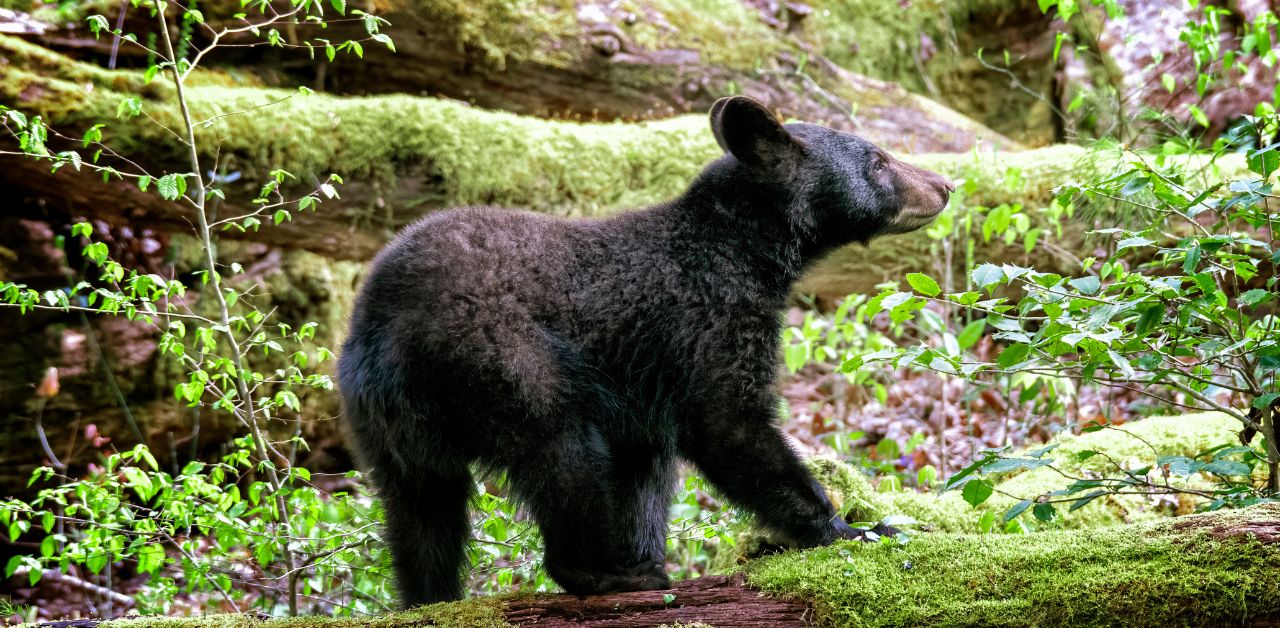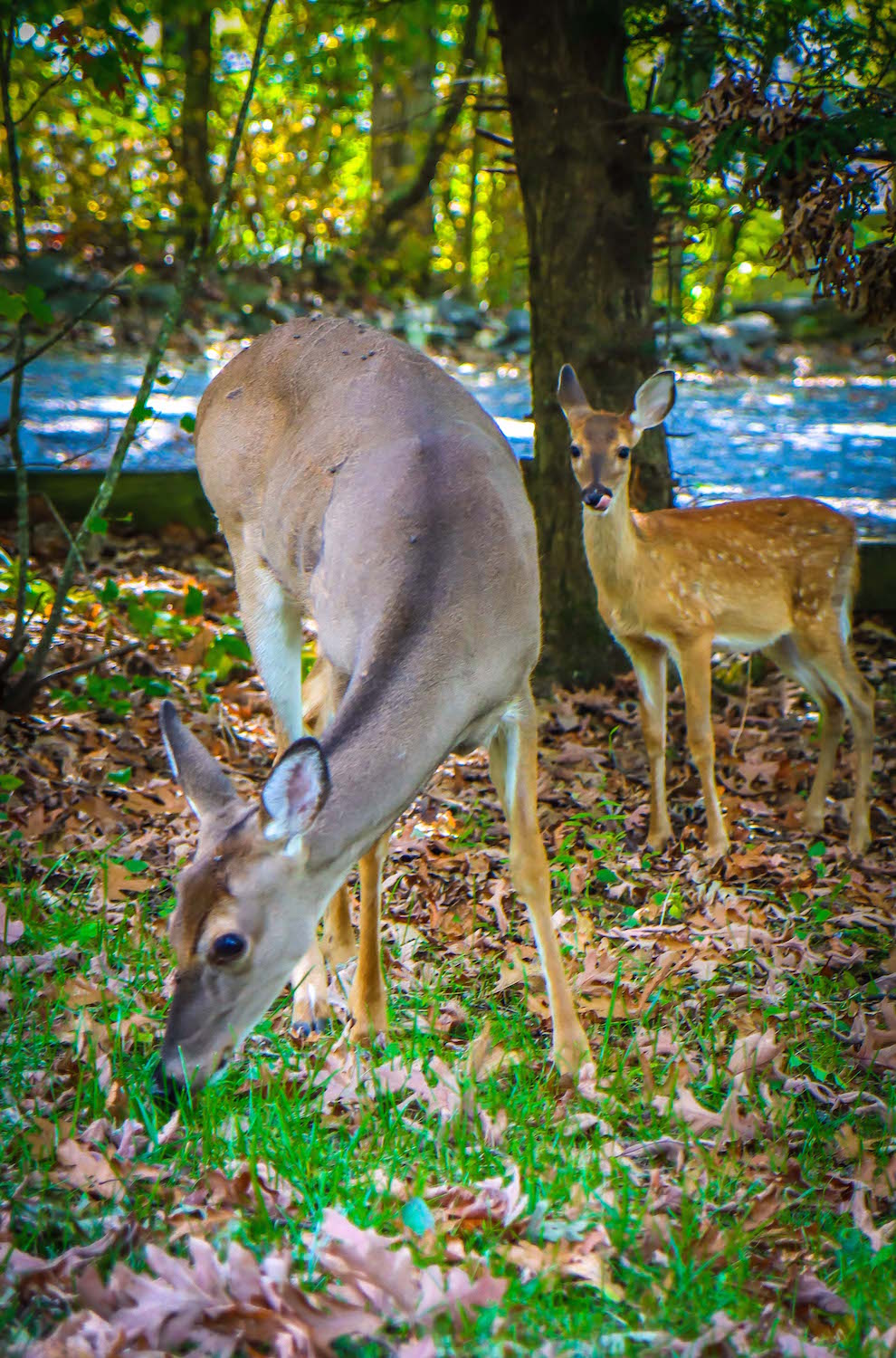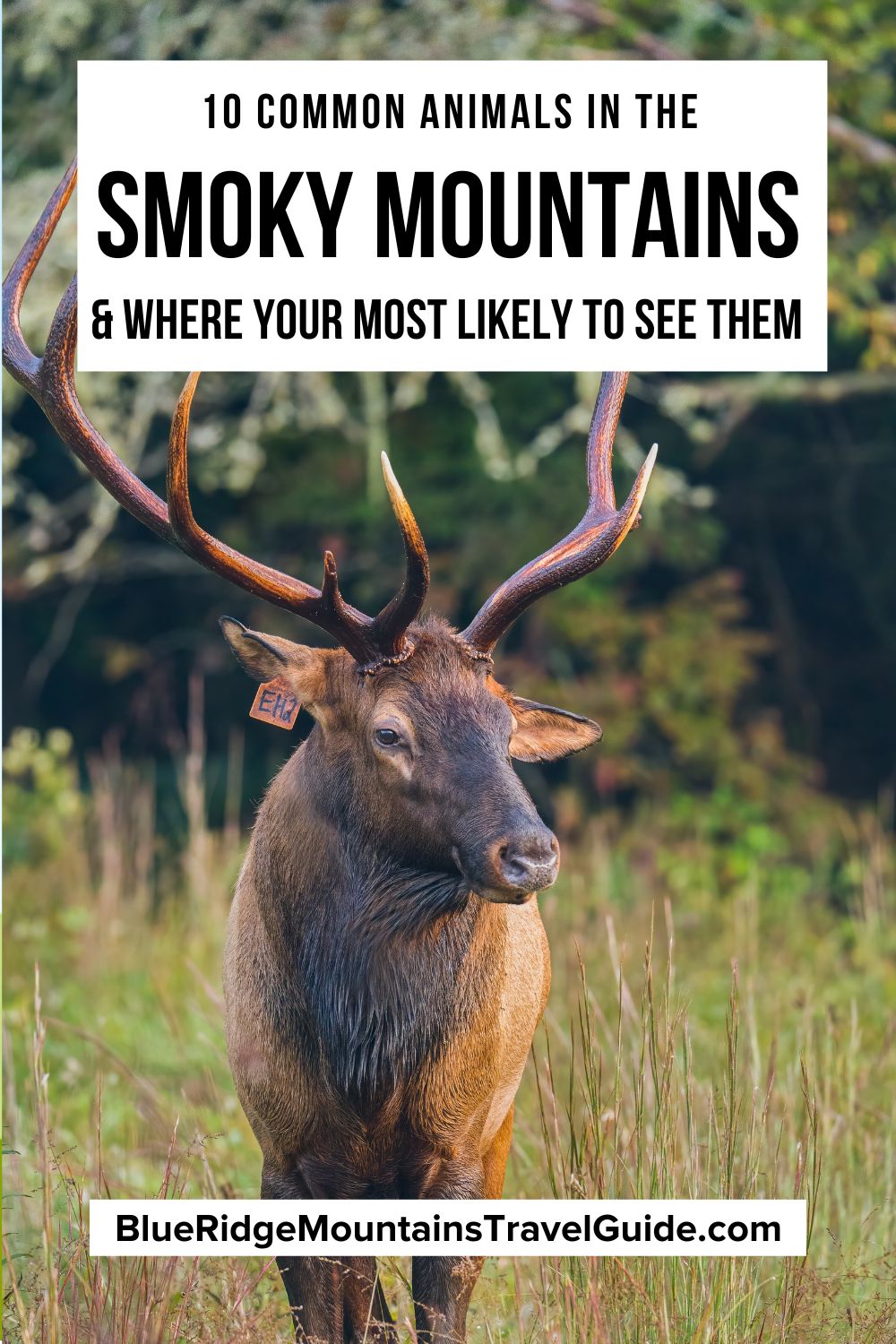Top Places to Stay in the Smoky Mountains
- Pigeon Forge TN: Twin Mountain Inn & Suites (free breakfast w/balconies overlooking river)
- Pigeon Forge TN: Dollywood’s DreamMore Resort and Spa (Top 10 Theme Park Hotel)
- Gatlinburg TN: Margaritaville Resort (high-end rooms w/island-inspired restaurants)
- Cherokee NC: Stonebrook Lodge (right across the street from Harrah’s Cherokee Casino)
- Bryson City NC: Sleep Inn (budget-friendly hotel w/continental breakfast)
Smoky Mountains Animals Guide
1. Smoky Mountain Birds
Did you know that Great Smoky Mountains National Park alone has over 240 bird species that have been spotted there?!
There’s a great list of all the birds you can see in the National Park on the NPS site, such the American Bald Eagle and other impressive birds of prey (including several different species of owl).
The magnificent Pileated Woodpecker is just one of 8 species of woodpeckers to look out for, plus there are lots of shorebirds, ducks,nighthawks, nuthatches, thrushes, thrashers, warblers, and wrens.
Some of the best places to view Tennessee birds in the park include Cades Cove, Campbell’s Overlook, and the Sugarlands Visitor Center.
READ MORE: The 15 Best Things to Do in Great Smoky Mountains National Park

2. Black Bears in the Smoky Mountains
It’s important to understand that knowingly going within 150 feet of a Black Bear is illegal in Great Smoky Mountains National Park. Violation of this federal regulation may result in fines and/or arrest.
Scientific estimates suggest that there are close to 2,000 Black Bears in the National Park, which equals around 2 bears for every square mile!
Bears are often seen in the open spaces of Cades Cove in Tennessee, and North Carolina‘s Cataloochee Valley.
They are most active in the mornings and evenings, so hiking in the woods during these times should be done with caution.
Actively seeking out a bear encounter is ill-advised, but there’s lots of great “bear aware” advice on what to do if you do come across a bear in the GSM.
READ MORE: The 20 Best Places to See Fall Foliage in the Smoky Mountains
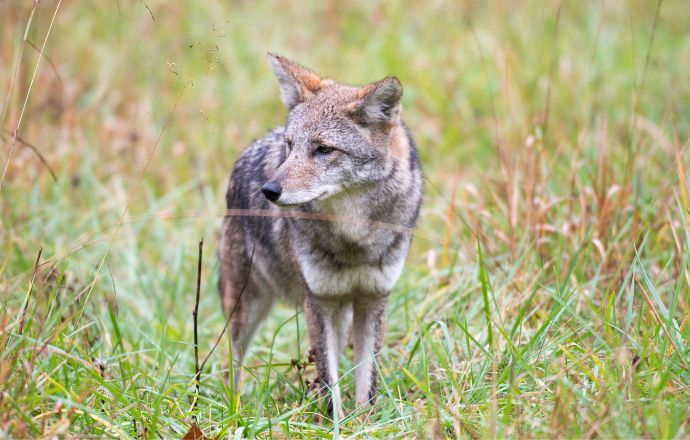
3. Coyotes in the Smoky Mountains
Coyotes are usually most active during the night, but you may occasionally see them if you’re out driving in the early morning or late evening.
In our experience you’d have to be lucky to see one (we never have). But if you’re staying at campgrounds in the park, you might be awoken by their calls in the night, which can be a little haunting!
One of the best places to see these evasive Great Smoky Mountains animals is in open spaces such as Cades Cove.
They typically hunt smaller mammals and fish. Coyote scat is easy to identify, as it tends to be found in the middle of pathways and roads and is often full of fur!
READ MORE: The 15 Best Great Smoky Mountains Campgrounds to Visit
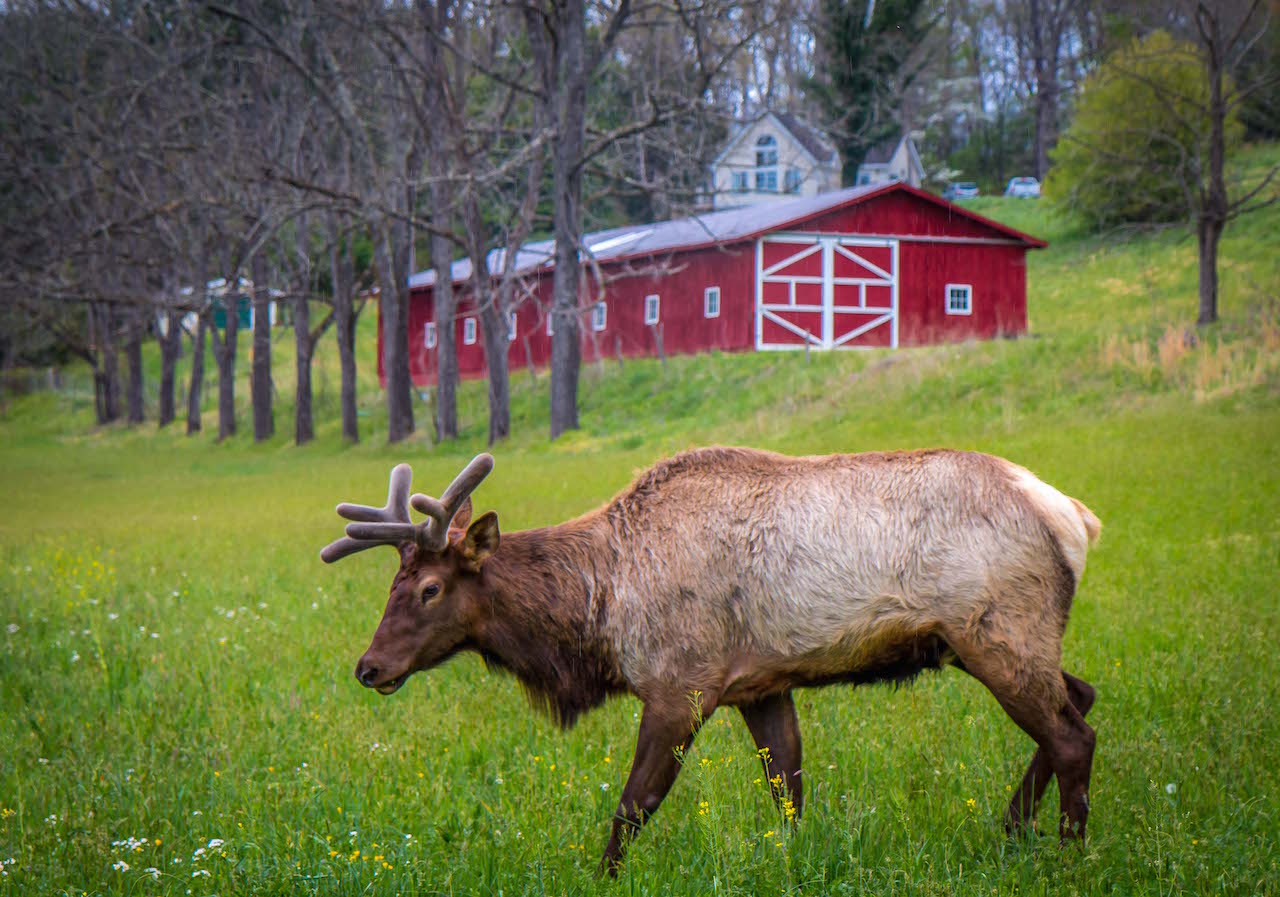
4. Elk in the Smoky Mountains
As with bears, it is illegal to knowingly enter within 150 feet of an Elk. It’s also a terrible idea, because Elk are widely considered one of the most dangerous animals in the Smoky Mountains!
Elk are much bigger than a bear, adult males have impressive antlers, and both sexes will fiercely protect both their young and territory.
The last wild Elk in NC was killed in the 17oos. But a successful reintroduction project began in 2001, when 25 animals were brought to GSMNP, with another 27 arriving in 2002.
Early morning or late evening is the best time to see Elk in the Smoky Mountains, since this is when they emerge from the forest to graze in open land.
The best place to see them is behind the Oconaluftee Visitors Center in Cherokee NC, in the Cataloochee Valley, and in nearby towns such as Maggie Valley.
READ MORE: The 20 Best Things to Do in Cherokee NC & the Qualla Boundary
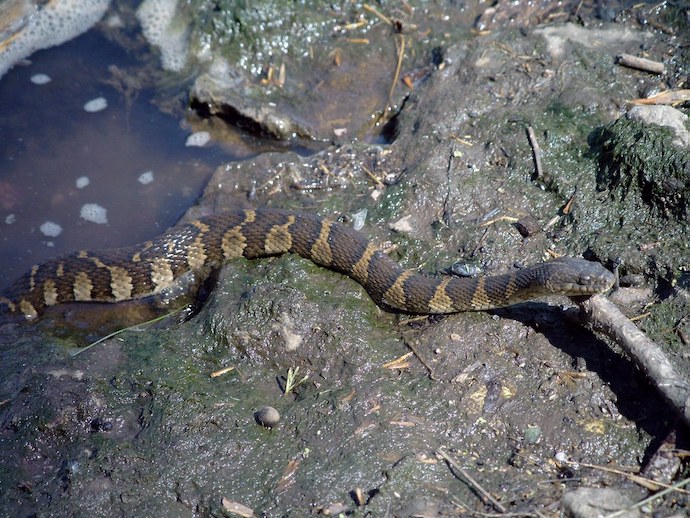
5. Non-Venomous Snakes in the Smoky Mountains
There are 23 species of snakes in GSMNP, and only two of them are venomous. That being said, no snakes should ever be intentionally approached, disturbed, or harassed.
If you’re around rivers or waterfalls, you might see a harmless Northern Water Snake, come across an Eastern garter snake in the grass, or spot a Rough Green Snake in the leaves.
A Black Snake could be just that, or you might have come across a Rat Snake, Black Racer, or Eastern King Snake.
It’s always advised to wear sturdy hiking shoes, and to be very careful around logs or rock piles. Venomous or not, you never want to disturb a snoozing snake!
READ MORE: The 15 Best Smoky Mountain Waterfalls to Visit
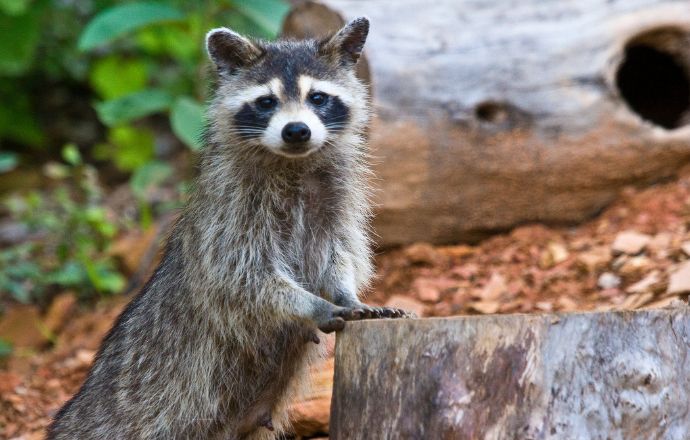
6. Raccoons in the Smoky Mountains
The incredibly cute, mostly nocturnal Raccoon is one of 65 mammals in the Great Smoky Mountains.
Commonly known as trash bandits (or our favorite nickname, “trash pandas”) due to their affinity for human junk food, Raccoons can often be seen around trash bins at campgrounds such as Elkmont or Cades Cove.
To avoid attracting these opportunistic critters, it’s important to keep all human food and litter safely secured.
Let’s help to keep them wild, where they mostly feast on frogs, crayfish, and bird and reptile eggs.
Note that Raccoons can carry rabies, so you must never to try to touch one, regardless of how adorable they may be!
READ MORE: The 10 Best Campgrounds in Tennessee to Visit

7. Salamanders in the Smoky Mountains
If you love salamanders, the Smoky Mountains is really the place to be!
This sub-range of the Blue Ridge Mountains is known as the “Salamander Capital of the World,” with 5 families of salamanders represented in the region.
There’s a whole list of salamanders to spot here, from tiny Pigmy Salamanders to the massive Eastern Hellbender.
The latter species can reach up to 29 inches long, but sadly their numbers in the park are on the decline.
Visitors can help protect the local salamander population by not moving or stacking rocks in creeks. That’s where many salamanders lay their delicate eggs and hide from predators!
READ MORE: Exploring the Fontana Dam and Visitors Center on Lake Fontana NC

8. Synchronous Fireflies in the Smoky Mountains
Synchronous Fireflies are one of 19 species of firefly that can be found in the Great Smoky Mountains, and one of only two species in North America that synchronize their flashes.
Visitors hoping to see Synchronous Fireflies should check the NPS website for projected viewing opportunities.
It is believed that the male fireflies flash in unison in order to let the females know that they are of the same species.
Their pattern is a series of 5 to 8 flashes followed by an 8-second pause before starting the sequence over.
Though their flashes of light may not appear to be in perfect harmony at first, the period of darkness is synchronized. As more and more males join in with the light show, the pulses of light will gradually start to synch up.
READ MORE: 15 Beautiful Wildflowers of Tennessee (and Where to See Them)
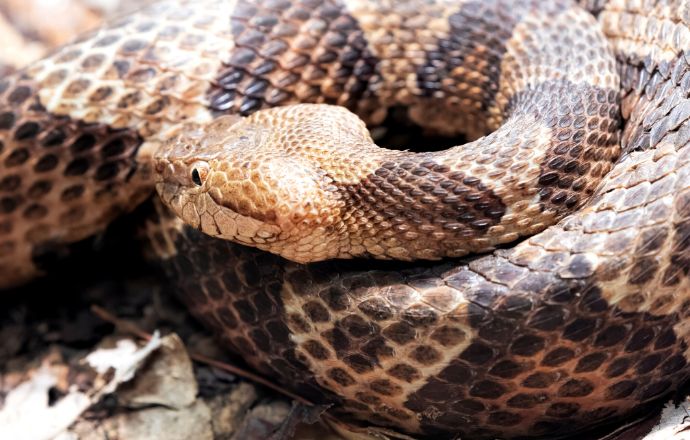
9. Venomous Snakes in the Smoky Mountains
There are only two species of venomous snakes in the Smoky Mountains, the Northern Copperhead and the Timber Rattlesnake. Both are elusive, and visitors are highly unlikely to come across one.
The Northern Copperhead tends to hang out in the cracks and crevices of rocks, and along creek banks. Copperheads have triangular heads, a copper hue to their skin, and Hershey’s Kisses-like patterns on their scales.
Timber rattlesnakes tend to inhabit south-facing rocky outcrops and forest floors. They can be very dark in color (ranging from brown to black), with a triangular head and a rattling tail.
You’ll likely hear a rattlesnake before you see one. Still, visitors should always be careful when hiking, and check to ensure the coast is clear before stepping on (or grabbing at) something.
READ MRE: 30 Great Smoky Mountains Facts for Trivia Buffs
Your chances of seeing a White-tailed Deer in the Smokies are pretty high compared to other animals on this life.
They live throughout the Appalachian region, and can often be seen grazing in open areas (such as Cades Cove and Cataloochee) and even along roads through the park.
These deer usually give birth in late June, so there will be fawns following their mothers at this time. Males start to grow antlers during their second Spring, and become fully developed by the end of that Summer.
White-tailed deer have battled various diseases that have dramatically affected their numbers. Predation by bears and coyotes also contributes to their fluctuating population. –by Emma Gallagher

